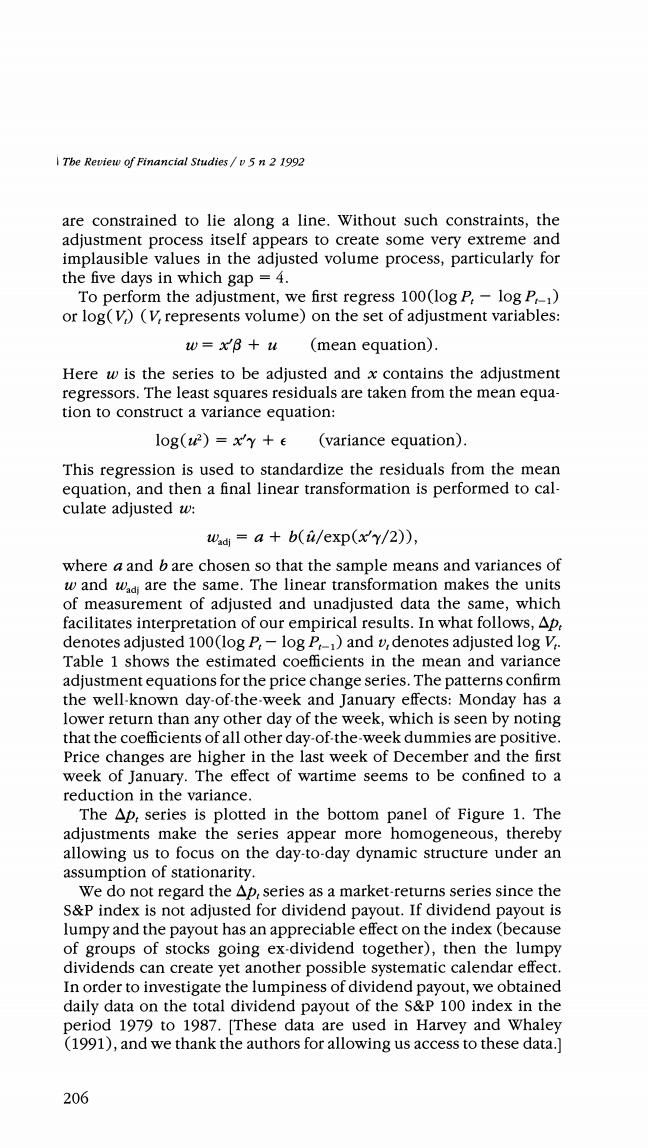正在加载图片...

Tbe Review of Financial Studies /v 5 n 2 1992 are constrained to lie along a line.Without such constraints,the adjustment process itself appears to create some very extreme and implausible values in the adjusted volume process,particularly for the five days in which gap =4. To perform the adjustment,we first regress 100(log P:-log P1) or log(V)(V,represents volume)on the set of adjustment variables: w=xB+u (mean equation). Here w is the series to be adjusted and x contains the adjustment regressors.The least squares residuals are taken from the mean equa- tion to construct a variance equation: log(42)=x'y +e (variance equation). This regression is used to standardize the residuals from the mean equation,and then a final linear transformation is performed to cal- culate adjusted w: wadi a+b(i/exp(x'y/2)), where a and b are chosen so that the sample means and variances of w and wadi are the same.The linear transformation makes the units of measurement of adjusted and unadjusted data the same,which facilitates interpretation of our empirical results.In what follows,Ap. denotes adjusted 100(log P,-log P-1)and v,denotes adjusted log V.. Table 1 shows the estimated coefficients in the mean and variance adjustment equations for the price change series.The patterns confirm the well-known day-of-the-week and January effects:Monday has a lower return than any other day of the week,which is seen by noting that the coefficients of all other day-of-the-week dummies are positive. Price changes are higher in the last week of December and the first week of January.The effect of wartime seems to be confined to a reduction in the variance. The Ap,series is plotted in the bottom panel of Figure 1.The adjustments make the series appear more homogeneous,thereby allowing us to focus on the day-to-day dynamic structure under an assumption of stationarity. We do not regard the Ap,series as a market-returns series since the S&P index is not adjusted for dividend payout.If dividend payout is lumpy and the payout has an appreciable effect on the index (because of groups of stocks going ex-dividend together),then the lumpy dividends can create yet another possible systematic calendar effect. In order to investigate the lumpiness of dividend payout,we obtained daily data on the total dividend payout of the s&P 100 index in the period 1979 to 1987.[These data are used in Harvey and Whaley (1991),and we thank the authors for allowing us access to these data.] 206